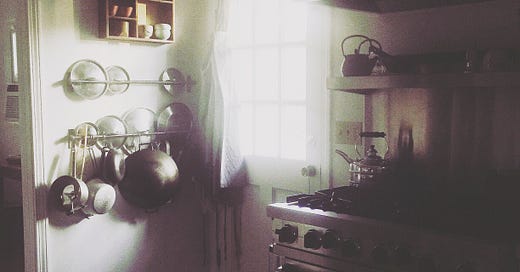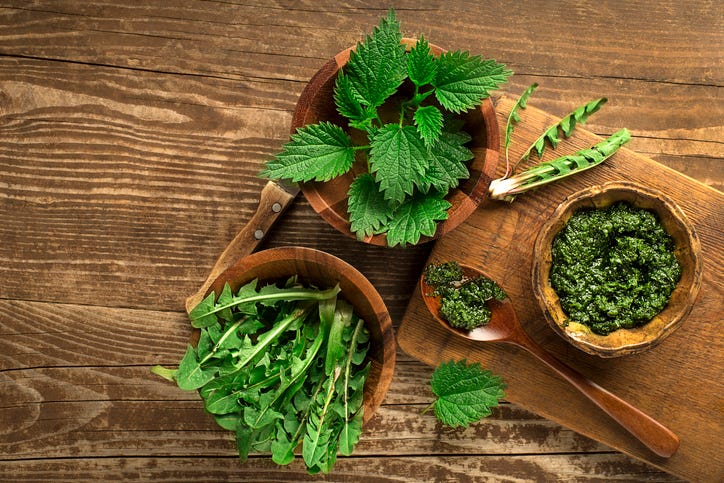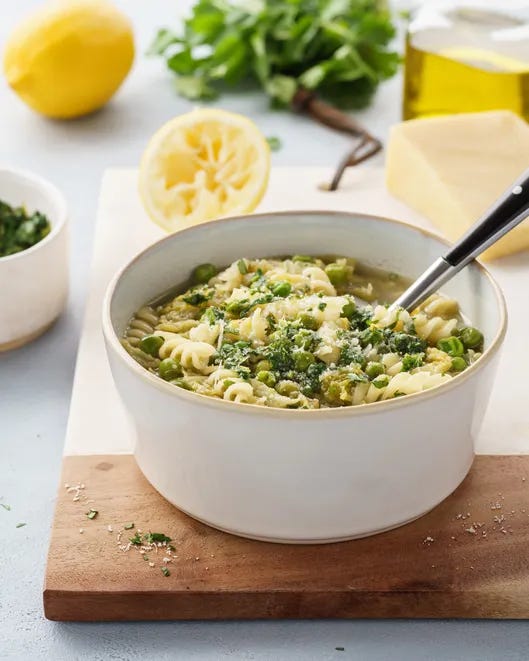If you cook, you know.
At a certain point, we all eat something memorable that we try, desperately, to duplicate. We spend hours trying to nail that one flavor. We tweak and edit and adjust and massage, just to get the correct color and consistency and general vibe. And it’s a rare occasion that we succeed.
But should we succeed? Should the Holsteiner Schnitzel I made last month really be exactly like the famous Luchow’s version that I used to share with my father in the 1970s a few years before the place closed? I’m not asking can it be—with identical ingredients and method (and skill), of course it can. But should it? How about my grandmother’s Hungarian goulash, or my Aunt Lena’s knishes, or cabbage strudel from the long-defunct Mrs. Herbst Bakery, or your southern grandmother’s fried chicken?
This is the foggy gray line—a culinary DMZ—across which sits the murky bog that comprises taste memory, emotional accuracy, cognitive ability, and desire; cross over into the mists, and you could disappear altogether, like James Earl Jones in an Iowa cornfield. He wants to know, to feel, and to experience a past so badly that he’s willing to fall, biblically, to desire, and vanish completely. Applied to the world of food and memory, if we succeed in duplicating something from long ago whose taste lodged itself deep in the recesses of our temporal cortex, does it somehow dilute the meaning—or the actual quality—of the original experience? And if we don’t succeed, does it tarnish the dish as we remember it?
When we long for the taste of a particular thing, is it the thing itself that we want, or the context in which we ate it?
A few years ago, my friend
and I were in Maine, leading a workshop together. We were talking about comfort and discomfort, and one of the questions I asked and wanted people to think about was: when we long for the taste of a particular thing, is it the thing itself that we want, or the context in which we ate it? Is it about the person who first fed us the thing, or the place where we first ate the thing? Do we love succotash because fresh corn comes only for a fleeting moment in the middle of summer, and then it’s gone? Or pastina because it’s what our grandmothers fed us when we were ill?One Sunday afternoon in the spring, many years ago, my friend Adriana called up and asked if I wanted to join her for lunch at a now-defunct trattoria in Greenwich Village. Perched on a corner of Carmine Street and Bleecker where Trattoria Spaghetto stood for many years (and is now 232 Bleecker), it was tiny and the sort of place that served nondescript wine out of scratched water glasses. Raised in New York City, I’d never been there, although I’d walked past it a thousand times since childhood. On that afternoon, we sat down, and for the first time in my life, I ordered soup for lunch. (We have a thing in my family about soup not being enough to constitute a proper meal, which is ridiculous.)
A bowl of green minestrone showed up, and I still have no idea what compelled me to order it. It was served with some plain semolina bread from Zito’s. It was like we stepped out of Nancy Meyers movie. The soup was delicious, the conversation was good, and then we went home—me to my small Manhattan studio apartment, and she, to her place in Carroll Gardens.
A nice bowl of soup on a Sunday afternoon. Big deal.
But for a long time, I lusted for it to the point of near-obsession. It was a ubiquitous Italian spring soup: bright green and wildly fragrant, with a combination of vegetables that included escarole, spinach, kale, and maybe some Swiss chard; there was some ditalini involved, along with a few quartered new potatoes, string beans, and cannellini. There was garlic, and probably leek. The broth was vegetable stock, and a hefty grating of Parmigiana Reggiano sat fraying on its surface, along with a drizzle of olive oil so fruity that you could smell it from across the room.
I searched everywhere but never found a recipe for it; I looked in Patience Gray’s Honey from a Weed, in Ada Boni’s Italian Regional Cooking, in Deborah Madison’s Vegetable Literacy, in Paul Bertolli’s Chez Panisse Cooking, in Elizabeth David’s Italian Food. I asked my chef friends and they mostly scratched their heads when I described it. Some said it was a classic, but not with potatoes; some said the kitchen probably just had leftover potatoes kicking around; some said it was only ever correctly made with escarole (just escarole), and others said that prosciutto would never be used, not even as a condiment. It never occurred to me to just try and make it the way my brain remembered it.
I was too on the fence to attempt the dish and too wistful to try and recreate another time in my life that, with many of its people, is gone.
I was afraid that the original Proustian experience would somehow be sullied if I duplicated it perfectly, and worse still if I screwed it up: I wanted the greens to be thick and bright and fresh the way they were in the restaurant, and the garlicky vegetable broth to be fat and round. But I also wanted it to be a Sunday afternoon in the 1990s when I was in my early 30s, when I had no mortgage and no car, and I could just call up my late Dad and meet him and my stepmother for pizza at Di Fara’s in Brooklyn. I wanted it to be both the soup and the situation about which I swooned to Susan for over a decade, but withheld because I was too on the fence to attempt the dish and too wistful to try and recreate another time in my life that, with many of its people, is gone.
So why now?
Maybe it’s a combination of age and longing and being settled. Maybe it’s the knowledge that that restaurant is long gone, and so there’s no possible chance of my getting back there and saying to myself, well, mine stinks by comparison. Or maybe I’m finally okay with the idea of putting my own spin on something so iconic, even if it winds up being very different.
I never have made my Aunt Lena’s knishes, and even though I have the recipe card for it, I likely never will. Knishes are just too fraught, and Lena was a tough cookie. But conjuring up a simple, elemental meal that was perfect and idiosyncratic and served to me on an ordinary cold Sunday afternoon in the spring—that’s a risk I can take, if only for love.
Green Minestrone
I’m certain there are as many variations of this recipe as there are soup lovers; omit the prosciutto (but add a sprig of rosemary) and the cheese, and replace the chicken with vegetable stock and it becomes vegan. Add potatoes (as the trattoria did) and it gives the soup a certain heft. Add garbanzos to it instead of the white beans. Add peas, or don’t. If it’s early summer or late spring, add chopped nettles or dandelion greens. If it’s late summer, add a small diced zucchini. Swirl in a good dollop of garlic scape pesto. If all the vegetables are young and tender, omit the beans and the pasta, give the whole thing a whir in a blender, chill it, and serve it cold. I prefer kale, chard, and escarole, but use any combination of greens, depending on what is available to you. Go ahead and experiment, and make this dish your own. My memory won’t be glaring over your shoulder.
Serves 4
2 tablespoons extra virgin olive oil
2 slices prosciutto, sliced into short strips
1 small onion, chopped
1 medium leek, white part only, chopped
2 ribs celery, diced
2 plump garlic cloves, minced
1 bay leaf
16 ounces cooked and drained cannellini beans
freshly ground black pepper, to taste
salt, to taste
8 cups chicken stock (or vegetable stock), plus more for thinning
A (combined) pound of chard, escarole and spinach washed well, stemmed, and chopped
1/2 cup cooked ditalini pasta or cooked fusilli
1 cup fresh baby peas (good quality frozen peas are fine)
Parmigiana Reggiano, for grating
Good quality extra virgin olive oil, for drizzling
Optional: With the greens add a small diced zucchini, or a handful of nettles, or a dollop of garlic scape pesto. Add a squeeze of lemon before serving, for brightness. Not traditional, but very good.
Heat the oil in a large soup pot set over medium heat until shimmering. Add the prosciutto and cook until it begins to lose its redness, about five minutes. Add the onion, leek, celery, and garlic to the pot, reduce the heat slightly, and cook slowly, stirring frequently, until they’ve all softened and become fragrant, about six to eight minutes.
Add the bay leaf and the white beans to the pot, give it a stir and a few grinds of fresh black pepper. Taste and add salt judiciously (you may not have to at all, because of the prosciutto). Pour in the stock, stir it, and raise the heat to bring the pot to a boil for a minute or two. Reduce heat to a simmer for five minutes, then fold in the greens handful by handful. Cook for about eight minutes, until they’ve completely wilted but are still bright green. Let simmer untouched for about two minutes. If it seems too thick, thin it out with a quarter cup of broth.
Stir in the ditalini and the peas, and continue to cook for another five minutes. Ladle into warm soup bowls and top with a substantial grating of fresh Parmigiana Reggiano and a drizzle of excellent quality olive oil.
Serve immediately, with fresh Italian bread.








This is wonderfully evocative, thank you. I wonder if reading recipes also creates an imaginary flavor and imaginary desire that reality (no matter how delicious) can never quite match.
On soup not constituting a meal: My former mother-in-law, an elegant, thin woman, once said to me, "A cup of soup and a roll is an excellent supper," and for years I would crack up whenever I saw a can of soup. Also we had to eat before we went to her house because she used the serving sizes in The Silver Palate Cookbook as gospel.